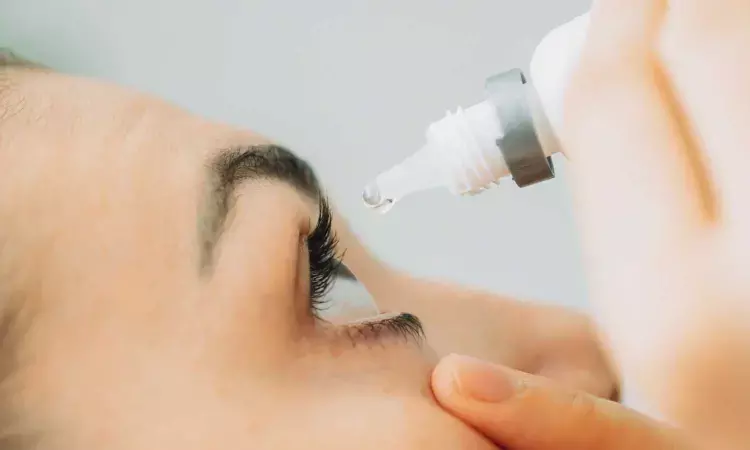- Home
- Medical news & Guidelines
- Anesthesiology
- Cardiology and CTVS
- Critical Care
- Dentistry
- Dermatology
- Diabetes and Endocrinology
- ENT
- Gastroenterology
- Medicine
- Nephrology
- Neurology
- Obstretics-Gynaecology
- Oncology
- Ophthalmology
- Orthopaedics
- Pediatrics-Neonatology
- Psychiatry
- Pulmonology
- Radiology
- Surgery
- Urology
- Laboratory Medicine
- Diet
- Nursing
- Paramedical
- Physiotherapy
- Health news
- Fact Check
- Bone Health Fact Check
- Brain Health Fact Check
- Cancer Related Fact Check
- Child Care Fact Check
- Dental and oral health fact check
- Diabetes and metabolic health fact check
- Diet and Nutrition Fact Check
- Eye and ENT Care Fact Check
- Fitness fact check
- Gut health fact check
- Heart health fact check
- Kidney health fact check
- Medical education fact check
- Men's health fact check
- Respiratory fact check
- Skin and hair care fact check
- Vaccine and Immunization fact check
- Women's health fact check
- AYUSH
- State News
- Andaman and Nicobar Islands
- Andhra Pradesh
- Arunachal Pradesh
- Assam
- Bihar
- Chandigarh
- Chattisgarh
- Dadra and Nagar Haveli
- Daman and Diu
- Delhi
- Goa
- Gujarat
- Haryana
- Himachal Pradesh
- Jammu & Kashmir
- Jharkhand
- Karnataka
- Kerala
- Ladakh
- Lakshadweep
- Madhya Pradesh
- Maharashtra
- Manipur
- Meghalaya
- Mizoram
- Nagaland
- Odisha
- Puducherry
- Punjab
- Rajasthan
- Sikkim
- Tamil Nadu
- Telangana
- Tripura
- Uttar Pradesh
- Uttrakhand
- West Bengal
- Medical Education
- Industry
Thermal Pulsation Shows Promise in Alleviating Meibomian Gland Dysfunction and Dry Eye

A recent review of existing literature published in the American Academy Of Ophthalmology by Jeremiah P. Tao and colleagues have explored the effectiveness and safety of thermal pulsation technologies in addressing Meibomian Gland Dysfunction (MGD) and dry eye. MGD is a common eye condition that can lead to dry eye symptoms due to issues with the Meibomian glands, which are responsible for producing the oily layer of the tear film.
Researchers conducted a thorough literature search on PubMed in June 2022, with an update in March 2023, focusing on studies published in English that examined the use of thermal pulsation for MGD and dry eye treatment. Out of 59 citations, 11 studies met the inclusion criteria. These studies were then assessed for their level of evidence, with eight rated as level I and three as level II.
● All included studies investigated the impact of a single 12-minute session using the LipiFlow automated thermal pulsation system, either from TearScience, Inc., or Johnson & Johnson.
● Patients who underwent thermal pulsation treatment exhibited improvements in both subjective and objective measures of MGD or dry eye within 1 to 12 months compared to untreated individuals.
● In the majority of cases (9 out of 11), thermal pulsation outperformed standard warm compress therapy and eyelid hygiene in terms of efficacy.
● It's worth noting that four of the level I studies with significant industry involvement reported conflicts of interest. Meanwhile, two of the four level I studies conducted independently found no significant difference between thermal pulsation treatment and conventional methods.
● No serious adverse events were reported in any of the 11 studies, indicating the safety of thermal pulsation.
Based on the current body of literature, a single session of thermal pulsation appears to offer a safe and effective means of improving subjective and objective markers of MGD and dry eye. However, it's important to acknowledge that industry support and participation were present in a significant portion of the high-level evidence studies.
The long-term durability of these benefits and the cost-effectiveness of thermal pulsation treatment still require further investigation. Additionally, since this assessment focused exclusively on the LipiFlow system, the conclusions are specific to that particular product.
To gain a more comprehensive understanding of the long-term benefits and potential drawbacks of this intervention, high-quality, independent studies are needed in the future. These studies could help guide healthcare professionals and patients in making informed decisions about the management of MGD and dry eye.
Reference:
Tao, J. P., Shen, J. F., Aakalu, V. K., Foster, J. A., Freitag, S. K., McCulley, T. J., Vagefi, M. R., Kim, S. J., & Wladis, E. J. (2023). Thermal pulsation in the management of meibomian gland dysfunction and dry eye. Ophthalmology. https://doi.org/10.1016/j.ophtha.2023.07.009.
Dr Kamal Kant Kohli-MBBS, DTCD- a chest specialist with more than 30 years of practice and a flair for writing clinical articles, Dr Kamal Kant Kohli joined Medical Dialogues as a Chief Editor of Medical News. Besides writing articles, as an editor, he proofreads and verifies all the medical content published on Medical Dialogues including those coming from journals, studies,medical conferences,guidelines etc. Email: drkohli@medicaldialogues.in. Contact no. 011-43720751


